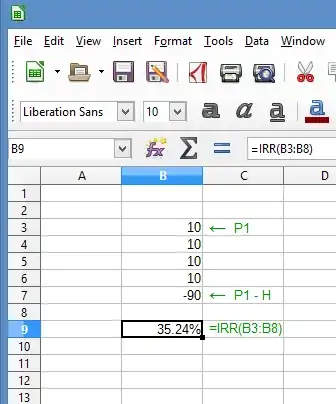I realize that my title is not clear but I currently don't master math terms well enough to write a better title or to enter meaningful tags. Any correction to my question, tags and title would be very welcome and I hope to learn fast.
This is my problem: let
$$P_1 = 10$$
$$N = 5$$
$$H = 100$$
I calculate the values of the $P$ series from $P_2$ to $P_N$ like this:
$$P_k = X P_{k-1}$$
for $K$ going from $2$ to $N$ .
I am trying to find an $X$ so that $P_1 + P_2 + ... + P_N = H$ for known $P_1,N$ and $H$.
If I take $X \approx 1.35$, I get:
$$P_1 = 10.00$$
$$P_2 \approx 13.50$$
$$P_3 \approx 18.23$$
$$P_4 \approx 24.60$$
$$P_5 \approx 33.22$$
which gives a sum quite close to 100.
However, I had let $$X \approx 1.35$$ just because I knew that in that way, given those values of $P_1$ and $N$, the sum of all the elements of the $P$ series would be $\approx$ $H$ , which is the requirement.
So I'm trying to figure out how to calculate $X$ as a function of $P_1$, $N$ and $H$ such that the sum of all the resulting elements of the $P$ series is = $H$.
